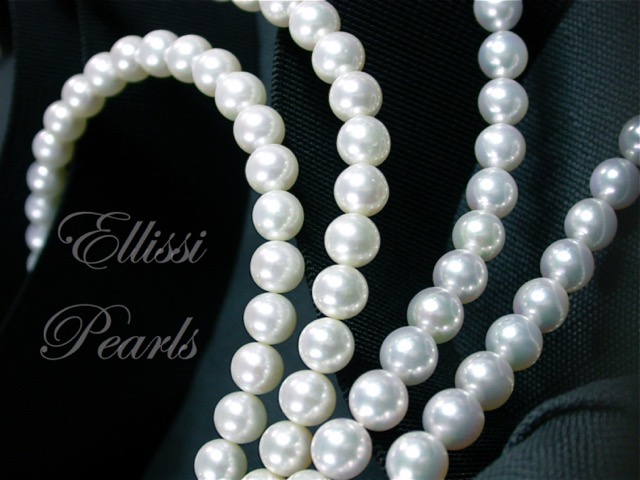-

“Maeve” Pearl And Diamond Drop Earrings
Style Number: E9848-1 -

“Luminous” South Sea Pearl Earrings
Style Number: E3872
Pearl Jewellery: Classic and Elegant. Timelessly Modern
Pearl jewellery is versatile and very, very beautiful. Pearl pieces can be worn during the day with a work outfit for a classic, timeless look and then transformed at night into stunning evening accessory.
The quality of a pearl is assessed by it’s lustre, size, colour, shape and complexion.
Lustre
Not unlike diamonds, pearls reflect, refract and radiate light through their surface. The pearl’s surface is known as the nacre (pronounced na-ker). The nacre is layer upon layer of shell and it gives the pearl it’s strength and beautiful glow. The quantity and quality of the nacre is important to how well the pearl reflects light. The test of a pearl with good lustre is how well it reflects your image when you look at the pearl. Pearls with good lustre are highly valued, over and above pearls that are dull and lifeless.
Size
Pearls are measured in millimetres across their diameter. The largest pearls are South Sea pearls, which are grown in the Pinctada Maxima oyster. These pearls can sometimes measure up to 20mm. Although size is important when assessing the value of any particular pearl, a large pearl that is dull will not be worth as much as a smaller pearl that exhibits a beautiful colour and lustre.
Colour
Pearls grow in a variety of colours, from white, to pink, silver, cream, and the very rare rich yellows and golds. Some pearls will have hues of other colours hinted at through the layers of nacre.
Tahitian pearls grow in the Black lip oyster, the Pinctada Margaritifera. Most people think of Tahitian pearls as being black, but in fact they come in a variety of colours including white, aubergine, green, grey, blue and deep black.
Pearls can be colour treated. Treatments include irradiation and dyeing. Akoya and freshwater pearls are treated for colour and lustre, as their layer of nacre is only thin.
Shape
Pearls form in a number of shapes. Perfectly round pearls are very rare. More commonly pearls are near round, button shape and teardrop or oval shape. Free form shapes are known as baroque and circle shapes. Every pearl is individual and can be used to make a unique pearl jewellery piece.
Complexion
A pearl’s complexion refers to the naturally occurring imperfections in the surface of the pearl. These can be small marks, lumps or indentations. An assessment is made for each pearl of the number and location of these imperfections. A pearl with high lustre will make the appearance of any imperfections less obvious. Flawless pearls are very, very rare, so most will have some small imperfections.



